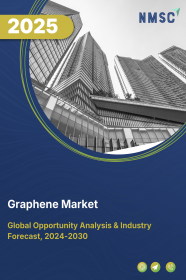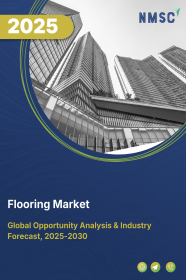Silicone and Silane Market by Type {Silanes (Diamino silane, Vinyl Group, Epoxy Group, Amino Group, Methacrylate, Mercapto, Others) and Silicones (Silicone Fluids, Silicone Gels, Silicone Elastomers, Silicone Resins)}, by End User (Building & Construction, Transportation, Electronics, Medical, Textile & Leather, Automotive, Personal Care & Consumer Products, Energy & Power, and Others) – Global Opportunity Analysis and Industry Forecast 2022-2030
US Tariff Impact on Silicone and Silane Market
Trump Tariffs Are Reshaping Global Business
Market Definition
Global Silicone and Silane Market size was valued at USD 18.1 billion in 2021 and is expected to reach USD 27.6 billion by 2030 with a CAGR of 4.7% from 2022 to 2030.
Silicone is a polymer composed of hydrogen, carbon, and other compounds that are utilized as a resin, grease, and oil, in a variety of industries including automobile, construction, medical, and electronics among others. Silicone offers an array of features including stability, inertness, flexibility, resistance to moisture, and permeability to gases. Silane, at the same time, is an organic chemical, formed by the interaction of silica sand with magnesium in the presence of hydrochloric acid. It is used for the bonding of two chemicals in a variety of industries. It offers critical advantages in several industrial sectors such as health care, aerospace, personal care, electronics, transportation, and construction.
Market Dynamics and Trends
Increasing innovation in the chemical industry and rising demand for paint and coating products from the construction sector drives the market growth of silanes and silicones market. Also, surge in demand for various industrial coatings, adhesives and plastic components accelerate the silanes and silicones market growth during the forecast period. Moreover, the usage of silanes-silica in automotive tires that increases fuel efficiency by 5% are expected to drive the global Silane and Silicone market during the forecast period.
However, rigorous regulation imposed upon the usage of silicones and silanes in end products and volatility in raw material prices are the expected to limit the growth to a certain extent. On the other hand, the trend of replacing plastic with paper and other environmentally friendly materials are expected to hinder the expansion of the silicone and silane market over the projection period. However, increased demand for semiconductors and electronics along with rising demand from several end user industries such as transportation and aerospace are expected to create lucrative opportunities for the market players in the coming future.
Market Segmentations and Scope of the Study:
The silicone and silane market is segmented based on type, silanes application, silicones application, end-user, and geography. Based on type, the market is divided into silanes and silicones. The silanes are further sub-segmented into diamino silane, vinyl group, epoxy group, amino group, methacrylate, mercapto, and others. The silicones are further sub-segmented into silicone fluids, silicone gels, silicone elastomers, and silicone resins. Based on end-user, the market is divided into building & construction, transportation, electronics, medical, textile & leather, automotive, personal care & consumer products, energy & power, and others. Geographic breakdown and analysis of each of the aforesaid segments includes regions comprising of North America, Europe, Asia-Pacific, and RoW.
Geographical Analysis
Asia-Pacific region holds the lion share of Silicone and Silane market at present and is expected to continue dominating the market throughout the forecast period. This is attributed to factors including rise in demand for plastic compounds and rubber substrata in the automotive, construction, industrial machinery, packaging, and electrical & electronics sectors. In addition, surge in government investments in infrastructure and megaprojects such as construction of bridges, rails and airports are further expected to boost the demand for silicone and silane in this region.
However, North America is expected to grow at a faster rate owing to the growth in its construction industry. Also, silicone and silane are widely used in automotive industry due to its heat resistance, cold resistance, weather ability, water repellency and deforming properties, which in turn drives the growth of market in this region.
Competitive Landscape:
The market comprises of various players such as ICM Products Inc., BASF SE, Kaneka Corporation., Evonik Industries, Emerald Performance Materials, WackerChemie AG, MPM Holdings Inc., Shin-Etsu Chemical Co., Ltd., DowDupont, and China National Bluestar (Group) Co, Ltd. These manufacturers are actively indulging in R&D initiatives, product & technology innovations, and industrial collaborations to enhance their product and increase their growth as well as geographical reach. For instance, in October 2021, Evonik launched TEGO RC 1442 release coating. With this launch Evonik is set to boost its radiation curing silicones portfolio with the launch of TEGO RC 1442 release coating.
Key Benefits
-
The silicone and silane market report provides the quantitative analysis of the current market and estimations through 2022-2030 that assists in identifying the prevailing market opportunities to capitalize on.
-
The study comprises a deep dive analysis of the silicone and silane market trend including the current and future trends for depicting the prevalent investment pockets in the market.
-
The information related to key drivers, restraints and opportunities and their impact on the silicone and silane market is provided in the report.
-
The competitive analysis of the market players along with their market share in the silicone and silane market.
-
The SWOT analysis and Porters Five Forces model is elaborated in the study.
-
Value chain analysis in the market study provides a clear picture of the stakeholders’ roles.
Key Market Segments
By Type
-
Silanes
-
Diamino Silane
-
Vinyl Group
-
Epoxy Group
-
Amino Group
-
Methacrylate
-
Mercapto
-
Others
-
-
Silicones
-
Silicone Fluids
-
Silicone Gels
-
Silicone Elastomers
-
Silicone Resins
-
By End User
-
Building & Construction
-
Transportation
-
Electronics
-
Medical
-
Textile & Leather
-
Automotive
-
Personal Care & Consumer Products
-
Energy & Power
-
Others
By Geography
-
North America
-
U.S
-
Canada
-
Mexico
-
-
Europe
-
UK
-
Germany
-
France
-
Italy
-
Spain
-
Rest of Europe
-
-
Asia-Pacific
-
China
-
India
-
Japan
-
South Korea
-
Australia
-
Rest of Asia-Pacific
-
-
RoW
-
UAE
-
Saudi Arabia
-
South Africa
-
Brazil
-
Remaining Countries
-
Key Market Players
- Nanjing Capatue Chemical Co.Ltd
- DoeDupont
- Elkem ASA
- QufuChenguang Chemicals Co. Ltd.
- Milliken & Company
- CHT Group Company
- Shin Etsu Chemical Co
- PCC SE
- WackerChemie AG
- KCC World
REPORT SCOPE AND SEGMENTATION:
|
Parameters |
Details |
|
Analysis Period |
2021–2030 |
|
Base Year Considered |
2021 |
|
Forecast Period |
2022–2030 |
|
Market Size Estimation |
Billion (USD) |
|
Market Segmentation |
By Type {Silanes (Diamino silane, Vinyl Group, Epoxy Group, Amino Group, Methacrylate, Mercapto, Others) and Silicones (Silicone Fluids, Silicone Gels, Silicone Elastomers, Silicone Resins)}, by End User (Building & Construction, Transportation, Electronics, Medical, Textile & Leather, Automotive, Personal Care & Consumer Products, Energy & Power, and Others) |
|
Geographical Segmentation |
North America (U.S., Canada, Mexico) Europe (UK, Germany, France, Italy, Spain, Rest of Europe), Asia-Pacific (China, India, Japan, South Korea, Australia, Rest of Asia-Pacific), Rest of the World (UAE, Saudi Arabia, South Africa, Brazil, Remaining countries) |
|
Companies Profiled |
ICM Products Inc., BASF SE, Kaneka Corporation., Evonik Industries, Emerald Performance Materials, WackerChemie AG, MPM Holdings Inc., Shin-Etsu Chemical Co., Ltd., DowDupont, and China National Bluestar (Group) Co, Ltd. |














 Speak to Our Analyst
Speak to Our Analyst





















